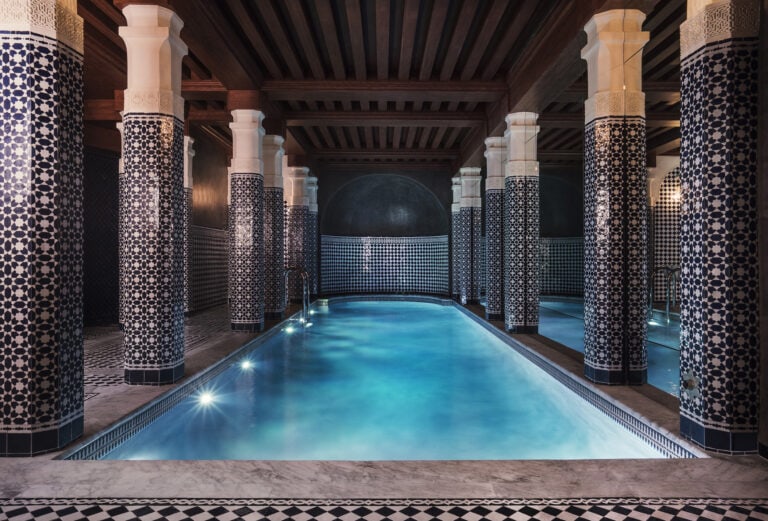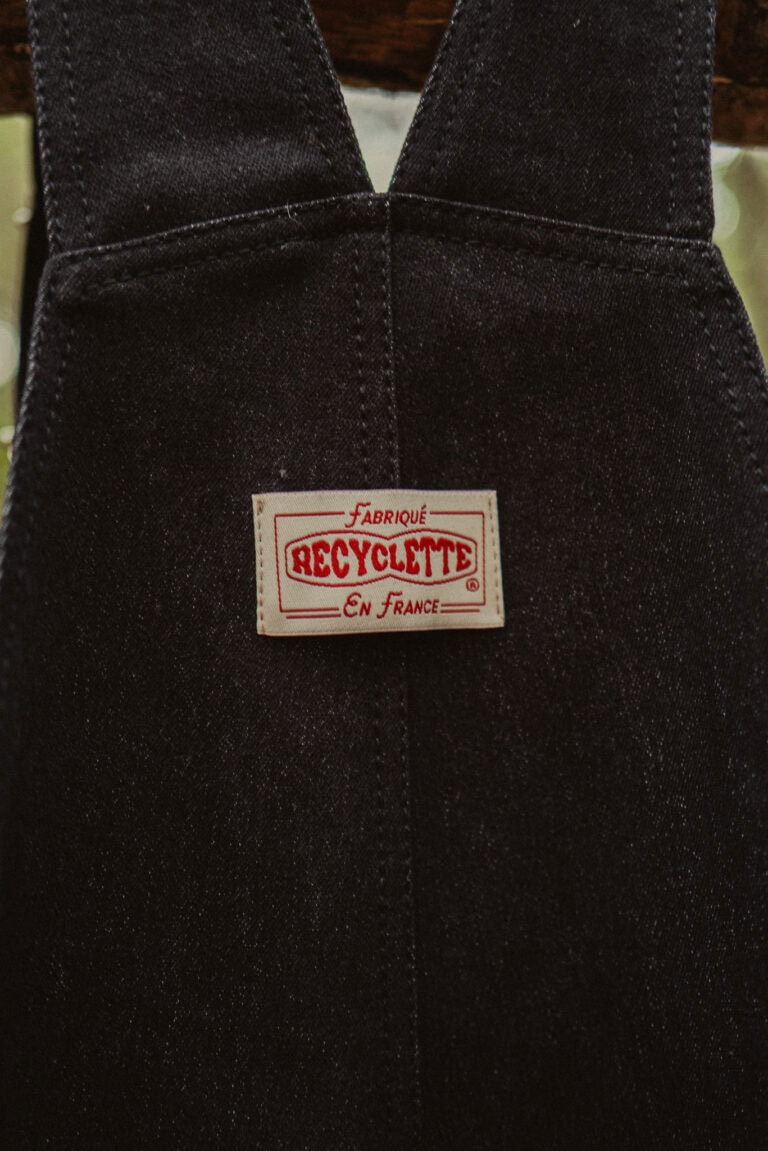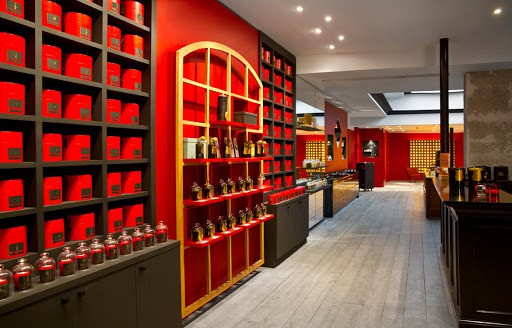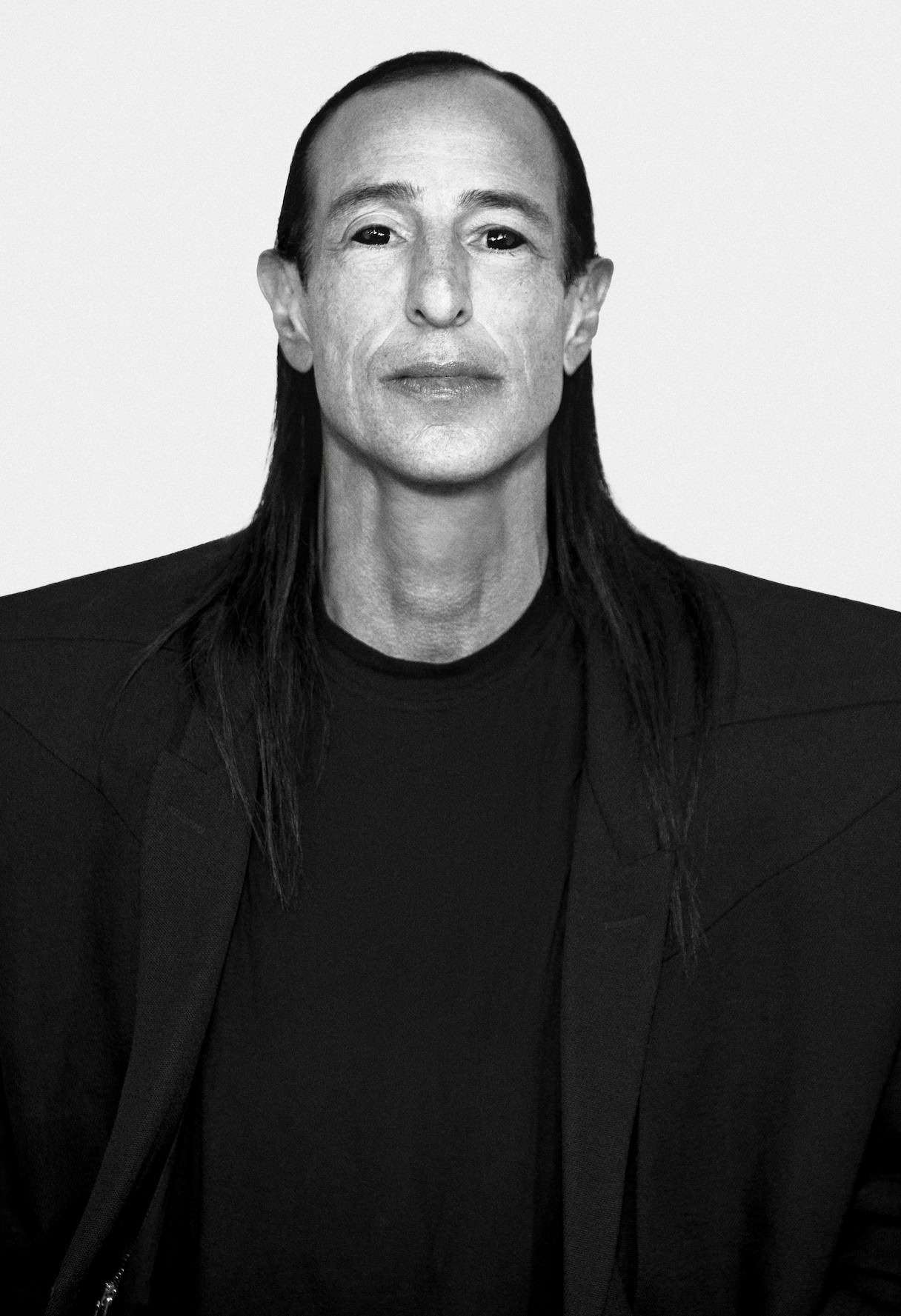
RICK OWENS: TEMPLE OF LOVE
Marie Loire Moulin
RICK OWENS: TEMPLE OF LOVE, a radical love letter in concrete couture. Rick Owens reshapes fashion history. It’s 2025. Fashion has splintered into aesthetics, algorithms, and activism. Meanwhile, Owens, California-born, Paris-based prophet of the avant-garde, enters the Palais Galliera like a high priest of post-everything. Temple of Love isn’t a retrospective. Rather, it’s an invocation. On view until January 4, 2026, it’s the first major Parisian show devoted to Owens. With over 100 silhouettes, archives, films, and sculpture, it turns the museum inside out. For example, statues on the façade wear sequined veils. The garden blooms in dystopian hues. Thirty brutalist monoliths rise like fashion fossils of a future past. Above all, this isn’t nostalgia. Instead, it’s spiritual staging. But to grasp this temple, you must trace its roots—not just to L.A., but to centuries of cultural defiance.
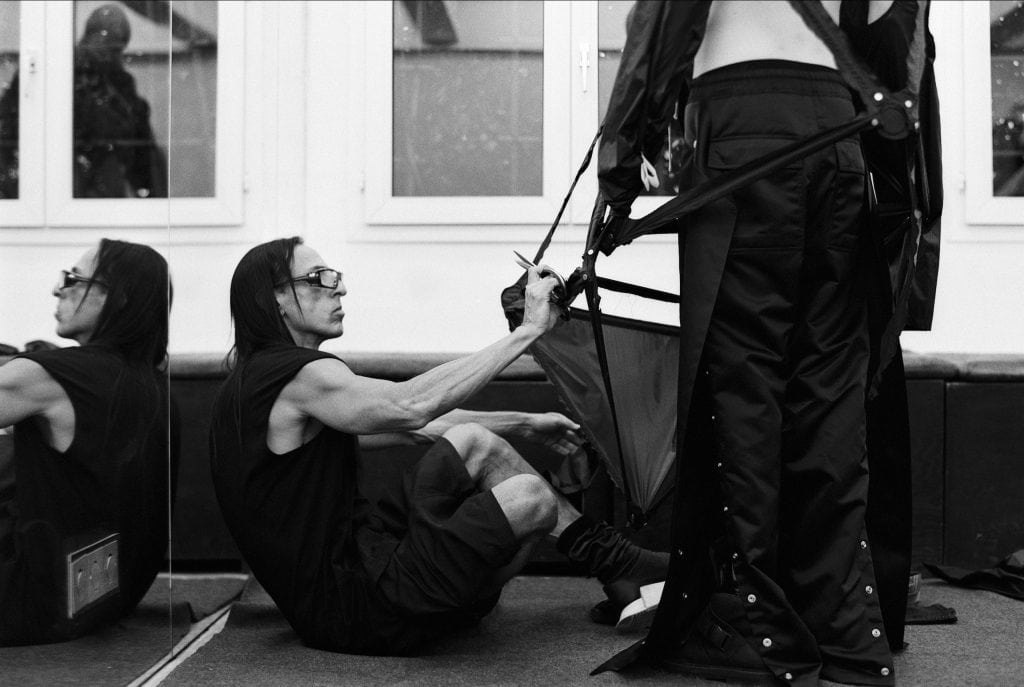
RICK OWENS AND THE MONOCHROME MYTH
Rick Owens’ visual universe didn’t emerge from nowhere. Catholic iconography, Wagnerian opera, Huysmans’ À rebours, and early cinema echo through his lines. Born in 1961 in Porterville, California, he grew up between strict religiosity and queer rebellion. By the 1990s, his LA creations, cut from salvaged fabrics, channeled Depression-era glamour with a brutal edge. As a result, his work holds tension: beauty and severity, elegance and collapse. Once draped in leather and darkness, his silhouettes now show unexpected softness. In contrast, Temple of Love reveals sculptural gowns with emotional depth. Owens calls his pieces autobiographical, charged with grief, lust, calm, and damage. “They are the calm elegance I aspire to,” he writes, “and the damage I’ve done along the way.” Ultimately, this duality is his language. Above all, it challenges the viewer to face their own contradictions.
RICK OWENS AND THE SACRED DOMESTIC
Michèle Lamy is the muse, always. One gallery reconstructs the bedroom Owens shares with his lifelong partner and creative co-conspirator, Michèle Lamy. The felt bed, the books they brought from LA to Paris, the rituals of daily life. All are there, not as nostalgia, but as living installation. As a result, Lamy’s aura pulses through the show like incense. In fact, she becomes the exhibition’s heartbeat.
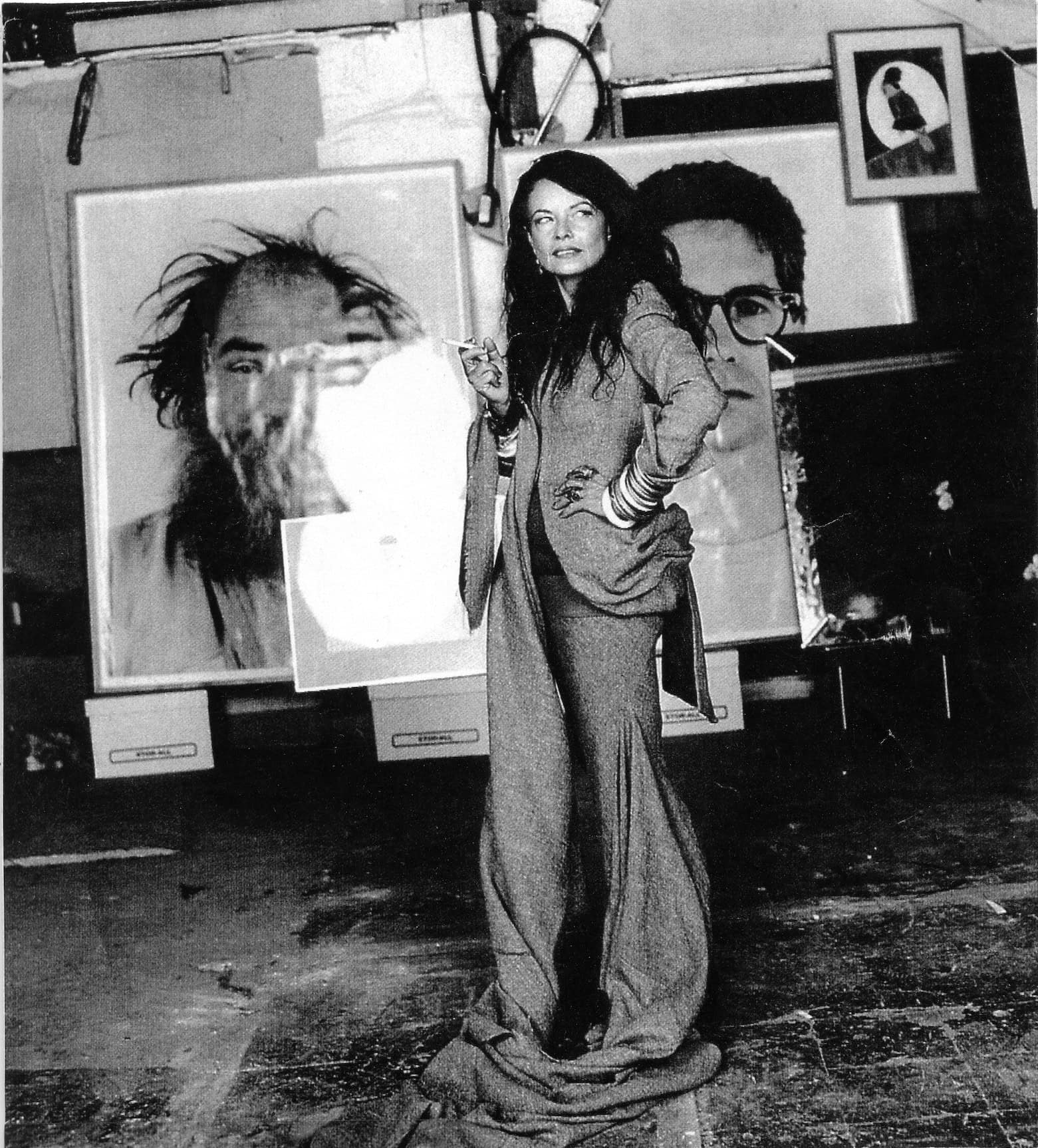
FASHION AS ARCHITECTURE, BODY AS LANDSCAPE
In the face of climate crisis, political violence, and cultural decay, Owens doesn’t offer soft answers. Instead, his silhouettes get sharper, louder, harder to wear. The garments become sculptures. Think: couture as confrontation. Aesthetics as resistance. Consequently, each piece feels like a manifesto. Moreover, every gesture is charged. He turns the male gaze on itself. He celebrates stepping as an act of defiance. Not only that, his shows replace runway models with gymnasts, with joyfully depraved outsiders, with mothers lifting each other up.
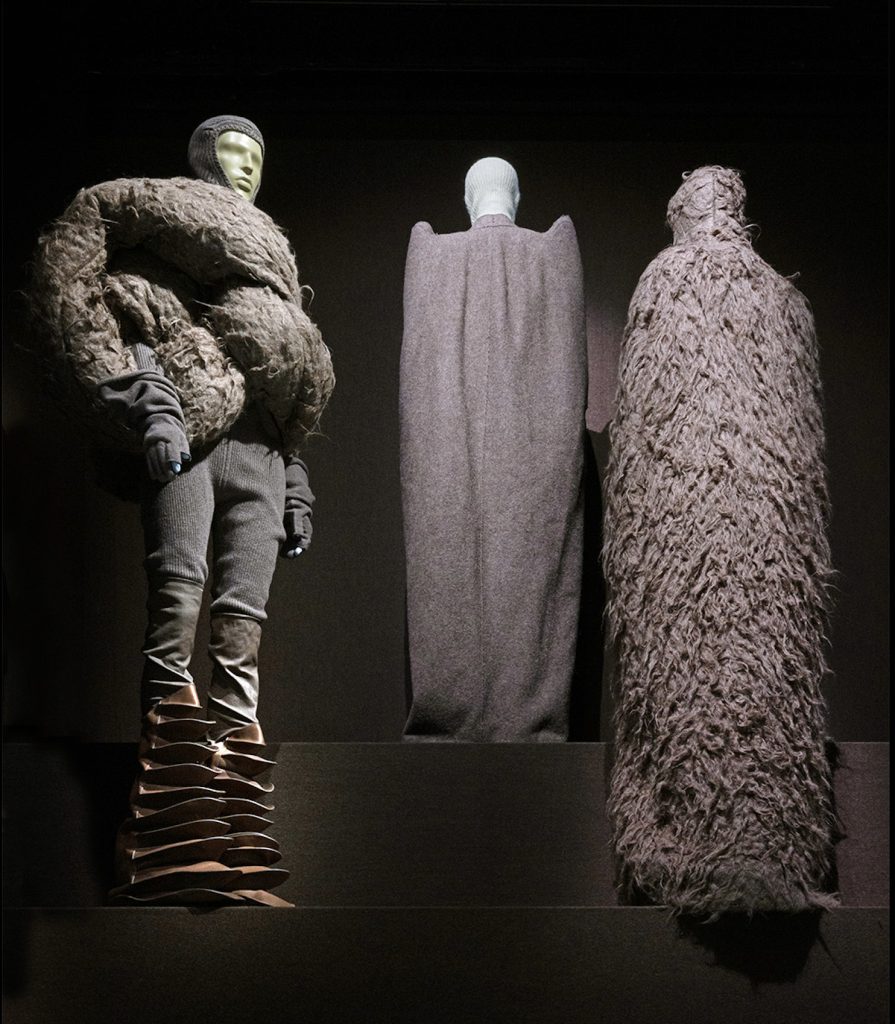
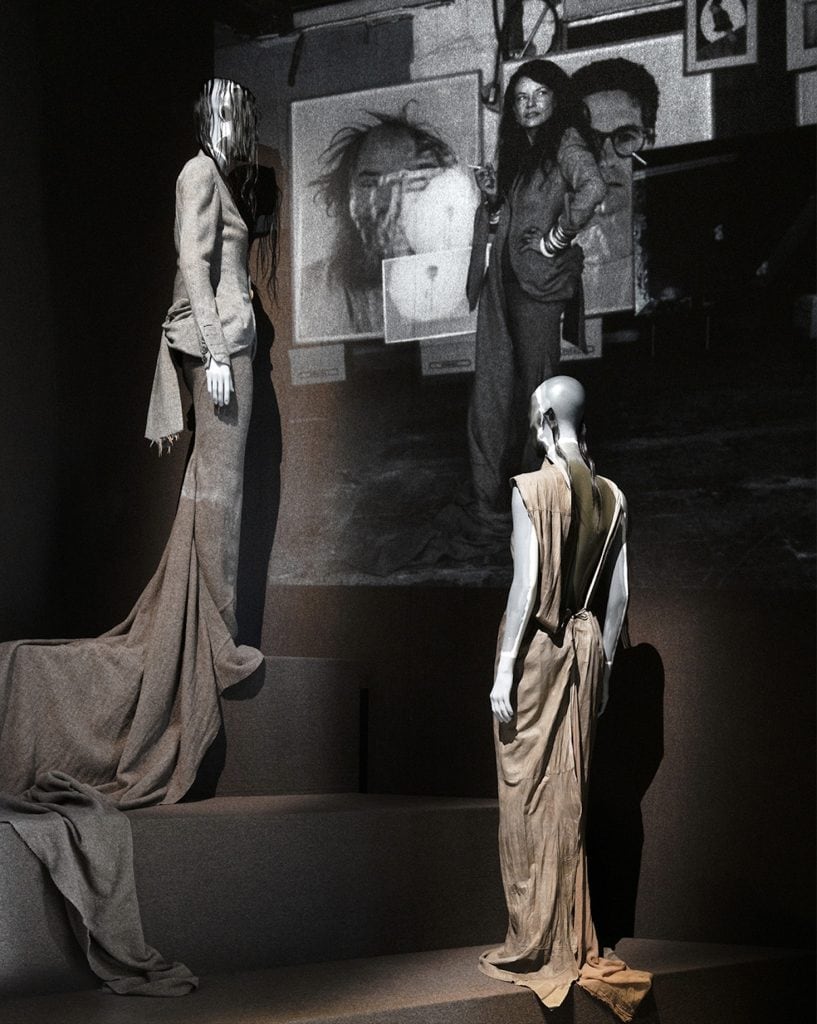
Owens turns garments into altars, couture as monument, on view at Palais Galliera. Courtesy of Palais Galliera
THE FINAL ACT OF RICK OWENS
What remains after the rupture. The last rooms of Temple of Love are the softest. There is color, finally. Vibrant dye, delicate motion, a love letter to the Mixtec heritage of his mother. Until recently, Owens leaned into severity. Now, vulnerability guides his vision. As Owens ages, his darkness doesn’t disappear, it transforms. Violence gives way to devotion. Control to vulnerability. In the gardens, blue morning glories bloom like memories. Cement sculptures rise like silent prayers. It’s not a fashion show, it’s not even an exhibit, it’s a reckoning.

LOVE, DECAY, AND LEGACY
Owens has never been about trends. He builds temples, he tears down binaries, he resurrects beauty from the ruins of masculinity, the excesses of spectacle, the ghosts of his own past. Clearly, his work stands apart. Still, it remains achingly relevant. In Temple of Love, Rick Owens doesn’t just present clothes. He offers a world, brutal, graceful, haunted, and wholly human. And maybe, just maybe, that’s the real act of love.
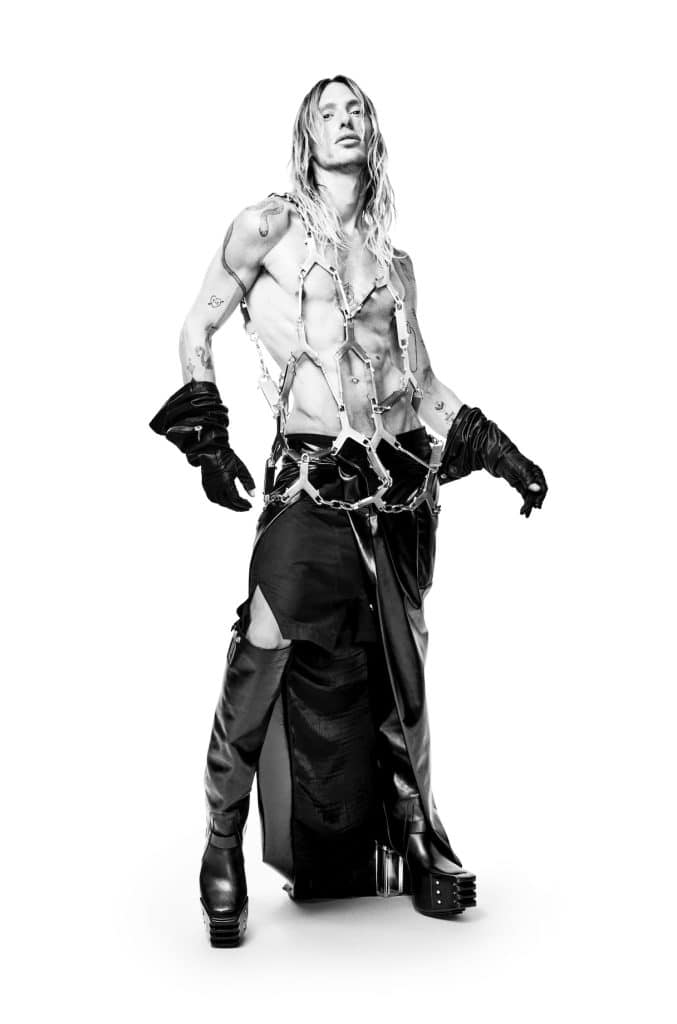
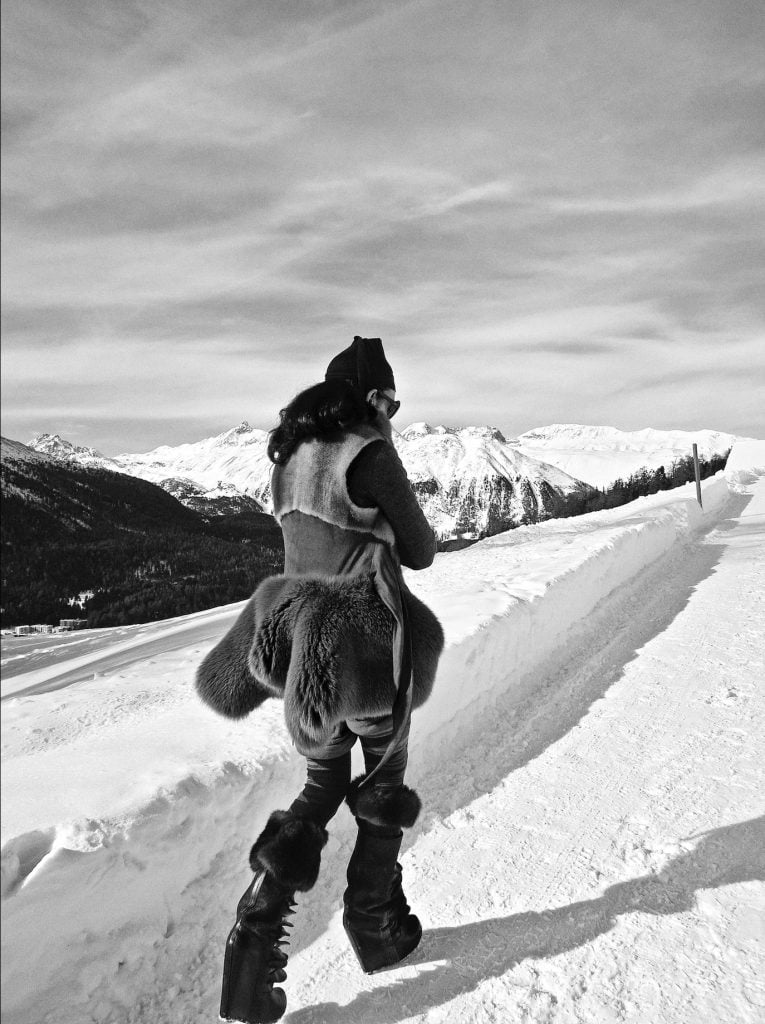
From mountain peak to backstage myth, Rick Owens blurs strength, ritual, and defiance. Courtesy of Palais Galliera
Did you enjoy RICK OWENS: TEMPLE OF LOVE? Much like Faten Gaddes turning silence into art, Rick Owens transforms pain, protest, and memory into form. But where Gaddes works in shadow and stillness, Owens builds cathedrals out of confrontation.
Share this post
Marie Loire Moulin approaches fashion as an immersive language—one that expresses identity, character, and cultural influence. Echoing Jean Cocteau’s observation that “Fashion is what goes out of fashion,” Moulin embraces the paradox at the heart of her craft. For her, fashion is a living, breathing art form—constantly deconstructed, reimagined, and reshaped in response to the world around it.
What fuels Marie Loire’s creativity is the ability to blend worlds—to explore the intersections of fashion, technology, history, and art. She is inspired by how these disciplines collide to generate experiences that are not only visually compelling, but also deeply purposeful.
Moulin is particularly drawn to artistic expressions that serve as bridges—linking cultures, fusing tradition with innovation. Sustainability, for her, is not a buzzword but a foundation. She sees it as a long-term commitment to thoughtful creation, not a passing aesthetic.
As a stylist working with actors on film sets, Marie Loire thrives on transforming a director’s vision into living, breathing characters. Through wardrobe and silhouette, she builds atmospheres that tell stories—stories of emotion, intention, and presence.
Her creative drive extends into virtual reality and immersive art, where she explores how emerging technologies can shift perception and spark connection across cultural boundaries. For Moulin, the digital realm is just another canvas—one that, when used with care, has the potential to resonate as powerfully as the physical world.
Whether on set or in virtual space, Marie Loire seeks originality and depth. Her work is marked by richly layered references, a reverence for detail, and a belief that fashion—at its best—can speak not just to the eye, but to the mind.
Read Next


